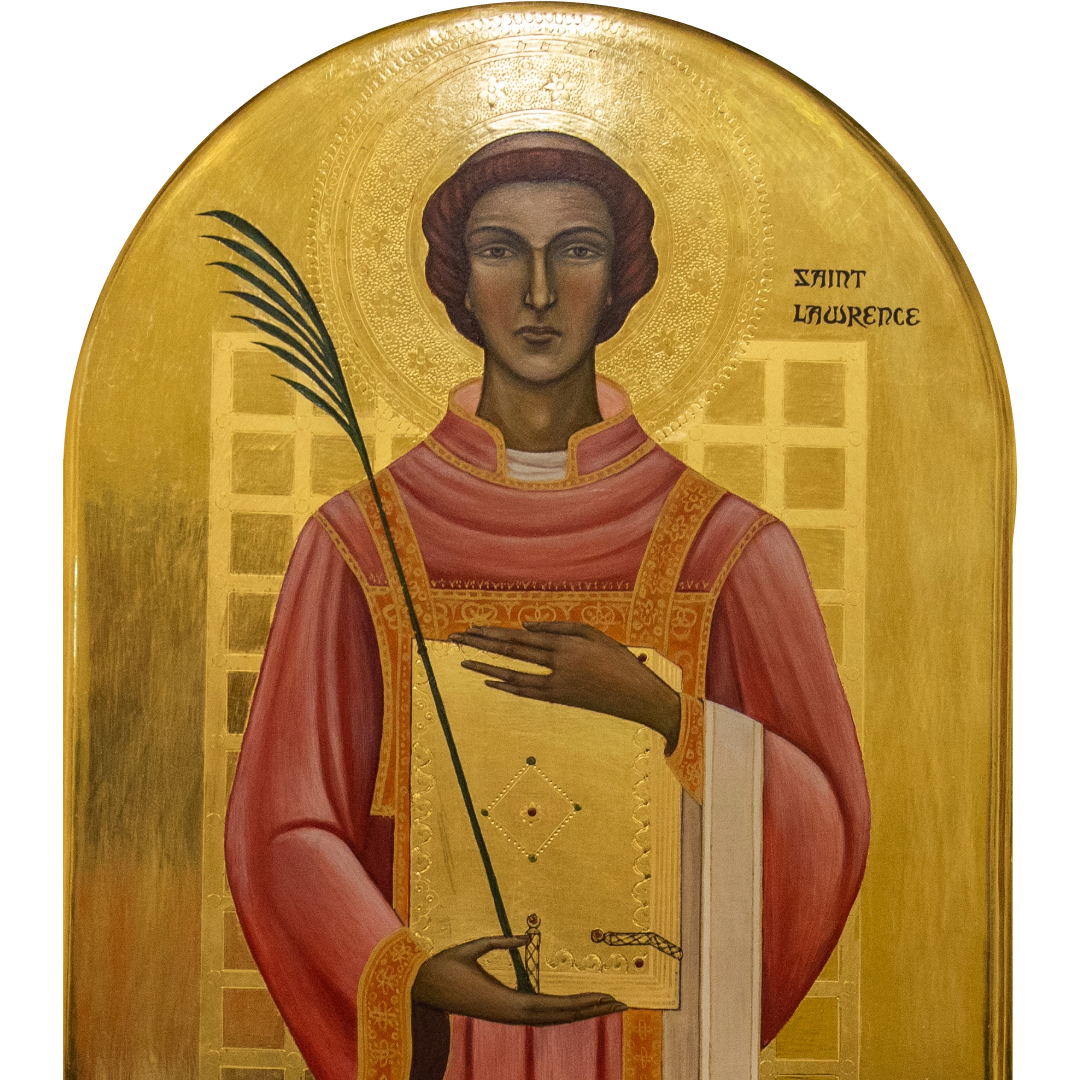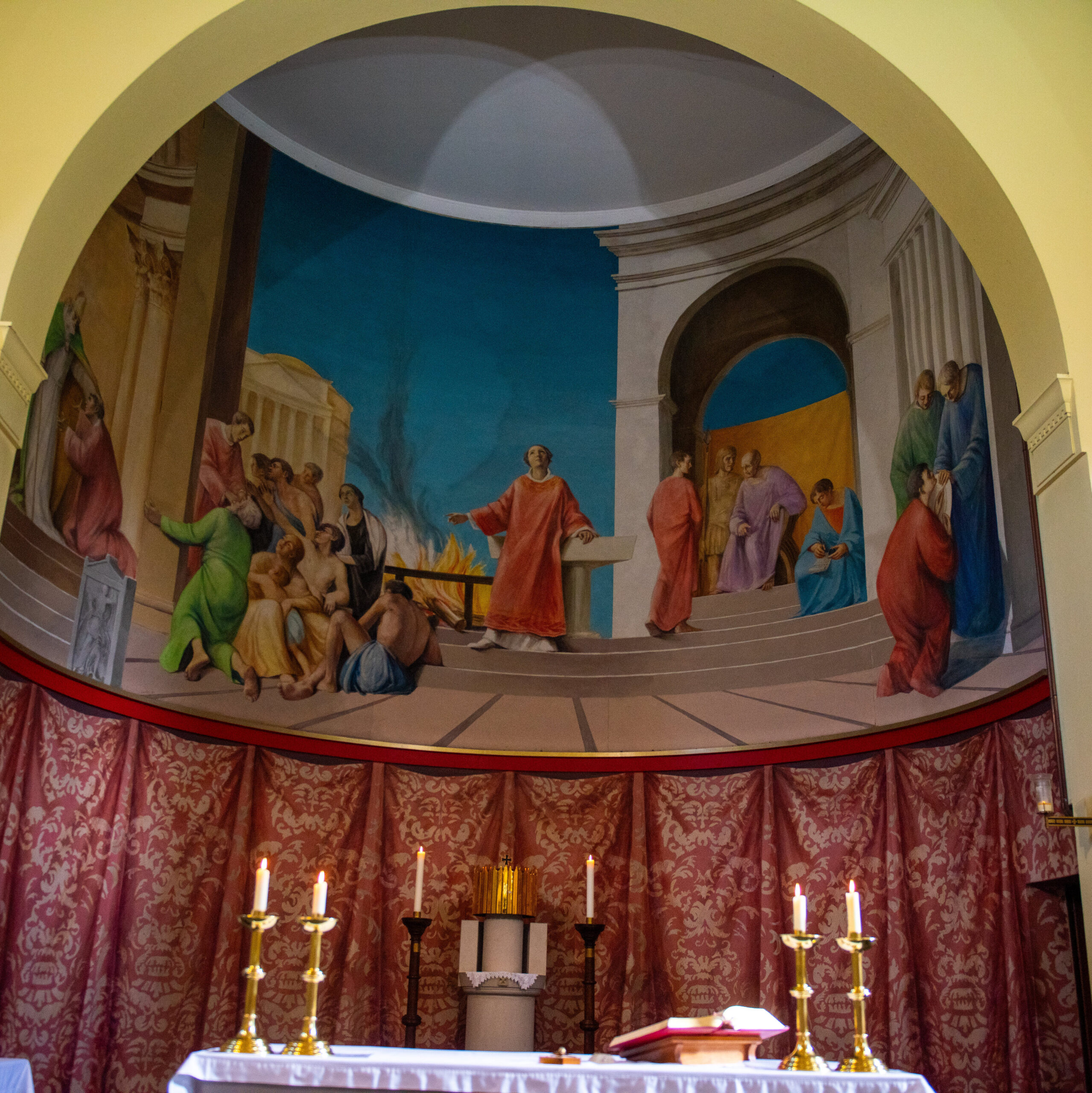The mural on the sanctuary wall tells the story of St Lawrence, who was leader of the seven deacons of the congregation in Rome, the seven men who, like Stephen and his companions (Acts 6:1-6), were in charge of administering the Church budget, particularly with regard to the care of the poor.

In 257, the emperor Valerian began a persecution aimed mainly at the clergy and the laity of the upper classes. All Church property was confiscated and meetings of Christians were forbidden. The bishop of Rome, Sixtus II, and most of his clergy were executed on 7th August 258; Lawrence was put to death on the 10th. Much of this is known from the near-contemporary records of the Church.

Other accounts go on to say that the Roman prefect, knowing that Lawrence was the principal financial officer, promised to set him free if he would surrender the wealth of the Church. Lawrence agreed, but said that it would take him three days to gather it. During those three days, he placed all the money at his disposal in the hands of trustworthy stewards, and then assembled the sick, the elderly, the poor, the widows and orphans of the congregation, presented them to the prefect, and said, ‘These are the treasures of the Church.’ The enraged prefect ordered him to be roasted alive on a gridiron. The courageous way in which Lawrence bore the torture made an enormous impression on the people of Rome, and made many converts, while greatly reducing among pagans the belief that Christianity was a socially undesirable movement that should be stamped out.
